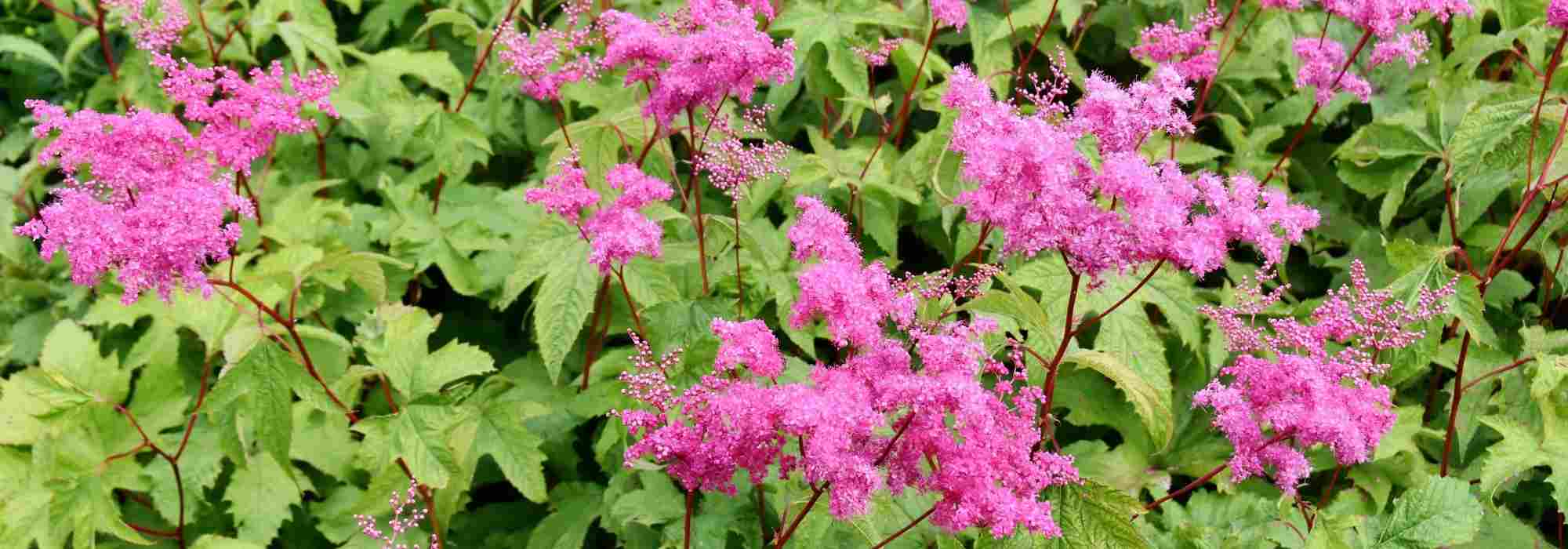
Filipendula: 5 pairing ideas
Vibrant and bright!
Contents
Filipendula or Meadowsweet is a beautiful perennial plant with both medicinal and ornamental qualities! It is essential for brightening up the cool areas of the garden. Like the Filipendula rubra ‘Venusta’, it can form large, airy and spectacular bushes. This robust and hardy herbaceous plant captivates with its extraordinary summer flowering in pink plumes with Filipendula purpurea ‘Elegans’ or cream-white with Filipendula vulgaris, supported by elegant, finely cut foliage. It is suitable for all types of gardens as long as the soil remains moist in summer.
The Filipendula brings a lot of lightness when planted near a pond, in a damp flowerbed, or a cool border. With its decorative inflorescences, it allows for playing with shades and gradients. It can be found in romantic white/pink combinations or to complement a lush atmosphere.
Both wild and elegant, in borders with other perennial flowers or bushes, it thrives alongside its companions in cool soil and lends itself to numerous pairing ideas!
To brighten up a cool corner
Appreciating humus-bearing and cool soils, Filipendulas are perfect plants for colonising a woodland where they will find the constant freshness and moisture they need. These rhizomatous perennials are beautiful colonising plants to let naturalise in a forest setting.
To bring as much light as possible, favour cream varieties, such as the giant Filipendula camtschatica with its majestic white umbels or a Filipendula ulmaria ‘Aurea’, for example, with its sunny deciduous foliage and very bright white flowering. Planted in the dappled light of a woodland, it always creates a “spotlight” effect. The Filipendula palmata, or palmate Filipendula with its pink feathery flowers and tall stems, is also stunning in a woodland atmosphere.
Still in subdued light, place the medium-sized Meadowsweet behind small sturdy plants, such as hardy geraniums, an Epimedium pubigerum and Heucheras. Play with contrasting foliage by mixing with broad leaves like those of an Hosta ‘Sun Power’ or with the graphic leaves of evergreen ferns like Polystichum polyblepharum or Dryopteris wallichiana.
To subtly illuminate this foliage environment and accompany the airy white flowering of the Filipendulas, consider a Thalictrum delavayi ‘Splendide Album’, a splendid variety resembling a giant Gypsophila, and a Solomon’s Seal.
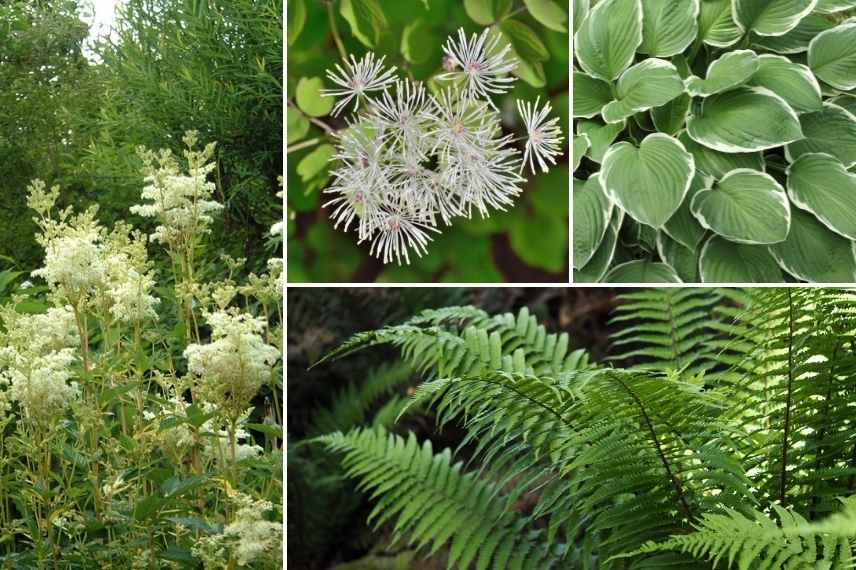
White Filipendula, beautifully paired with a Thalictrum, highlighted by the foliage of some Hostas and ferns
On the edges of a pond or a bank
Filipendulae thrive particularly well near water bodies, enhancing very damp areas of the garden. Fearing drought, they are especially suited for a water garden.
For a fresh and lush atmosphere, pair them with Meadowsweet and other perennials for wet banks, which, like them, enjoy cool to moist soils, such as Japanese irises, a Goat’s Beard ‘Misty Lace’, Rodgersias, Astilbe ‘Diamant’, Chinese Lysimachia, butterbur, knotweeds, and other perennials with generous foliage like Acanthus mollis. In a bank setting, Filipendula ulmaria ‘Variegata’ will create colourful harmonies near the very decorative yellow-green foliage of a dogwood ‘Aurea’ and a Hakonechloa macra ‘Aureola’.
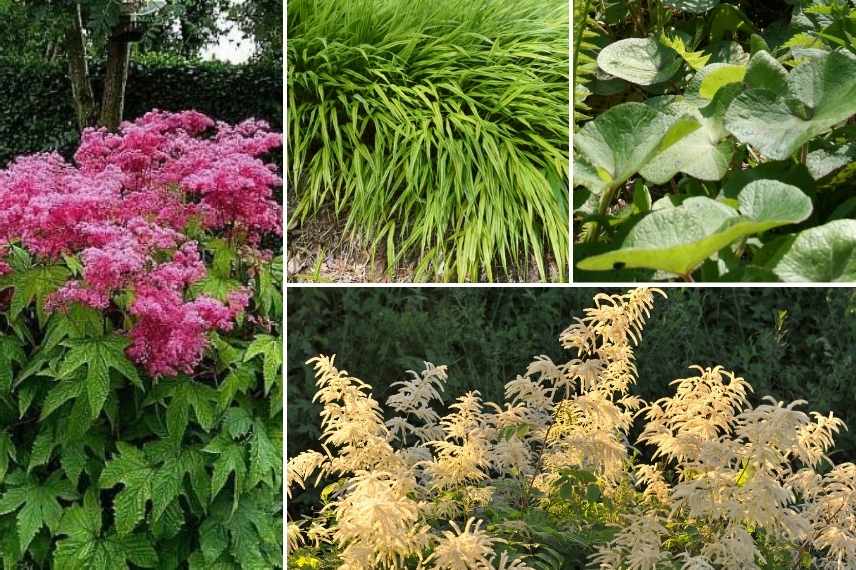
Filipendula palmata, Hakonechloa macra, Petasites japonicus, Aruncus dioicus
Discover other Filipendula
View all →Available in 0 sizes
Available in 0 sizes
Available in 0 sizes
Available in 0 sizes
Available in 3 sizes
Available in 0 sizes
Available in 0 sizes
Available in 1 sizes
Available in 2 sizes
Available in 1 sizes
To add depth to a damp mixed border
By its feathery silhouette, large dissected foliage, and airy corymbs of pastel or fiery pink flowers, there’s nothing quite like a simple meadowsweet to bring vibrant relief to a damp flowerbed! They create a small, expressive coloured mist to brighten this fresh setting.
Choose compact varieties of Filipendula (‘Nana’, F. vulgaris ‘Kahome’), which reach no more than 40 cm in height and make excellent border plants. They will form clumps of small pink flowers, easily pairing with the blooms of many other perennials such as Thalictrum ‘Little Pinkie’ or the lovely mini meadow rue Thalictrum kiusianum, Purple Joe-Pye weed, Persicaria ‘Pink Elephant’, small Hostas like Hosta tardiana ‘Halcyon’, or even Heucheras.
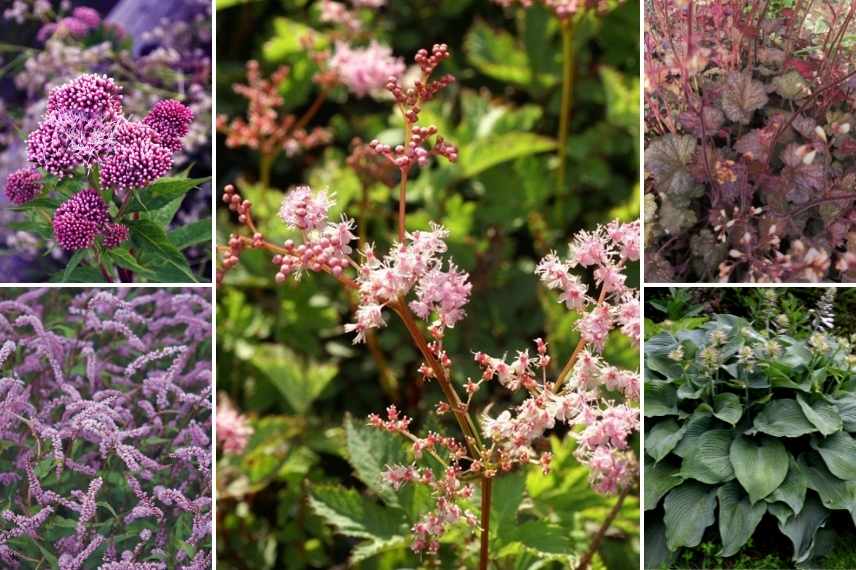
Filipendula ‘Kahome’ in the centre, accompanied by Joe-Pye weeds, persicarias, Heucheras, and ‘Halcyon’ Hostas.
Read also
12 perennials for heavy, wet soilTo make a fresh flowerbed come alive
Meadowsweet is particularly suited to cottage gardens and cool wild gardens.
Place the largest specimens at the back of the border. With their wild yet graceful appearance, they create an airy, exuberant, and colourful backdrop. In a pink garden border, Filipendula rubra ‘Venusta’, ‘Rosea’, or ‘Elegans’ charm with their extraordinary bright pink or pale pink inflorescences. They look stunning alongside Japanese anemones and Astilbes (Astilbe chinensis ‘Vision in Pink’, Astilbe chinensis ‘Pumila’) which they closely resemble, Astrance major ‘Rubra’, Digitalis, or a floriferous Thalictrum delavayi ‘Hewitt’s Double’ with its mini lilac-pink pom-poms.
At the edge of the border, place a groundcover such as Heuchera ‘Georgia Plum’ with its evergreen pink-purple foliage and punctuate this scene with a wild touch using clumps of grasses like large carex.
In large borders, these herbaceous perennials also pair very well with rhododendrons, azaleas, and hydrangeas and a Acer palmatum ‘Atropurpureum’ with its purple foliage.
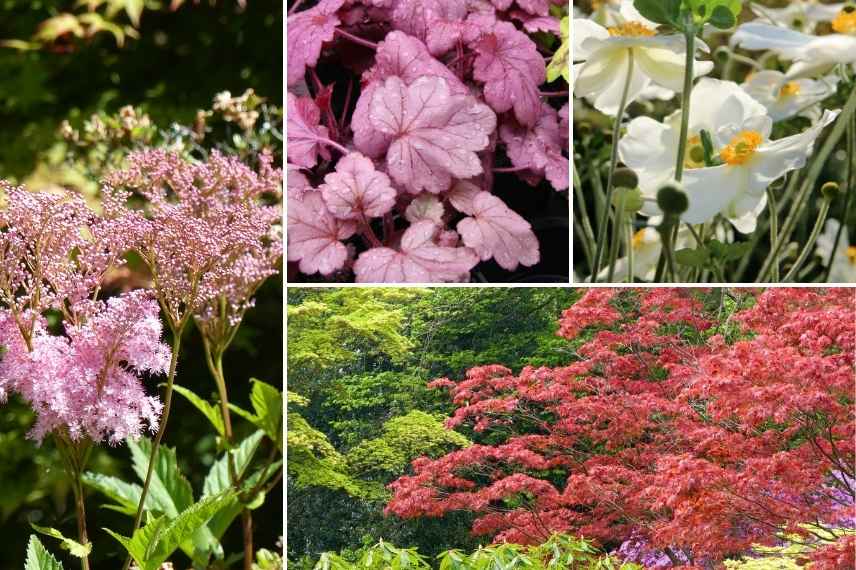
Filipendula rubra ‘Venusta’, Heuchera ‘Georgia Plum’, Japanese anemones, and Acer palmatum create a lovely autumn scene in cool soil
In an exotic scene
Some Filipendulas, such as Filipendula camtschatica, can reach nearly 3 m in height. With its ample, finely cut foliage and enormous white flower umbels, this type of meadowsweet adds a very exotic charm to a display. For an exotic atmosphere, pair it with Giant Reed, giant hostas (‘Empress Wu’ or ‘Jurassic Park’®), Ligularia stenocephala ‘The Rocket’, an impressive and majestic perennial with yellow flowers, and castor beans. Complete the scene with Osmunda regalis ‘Purpurascens’, a magnificent large fern, and of course Rodgersia and Gunneras, other refreshing plants.
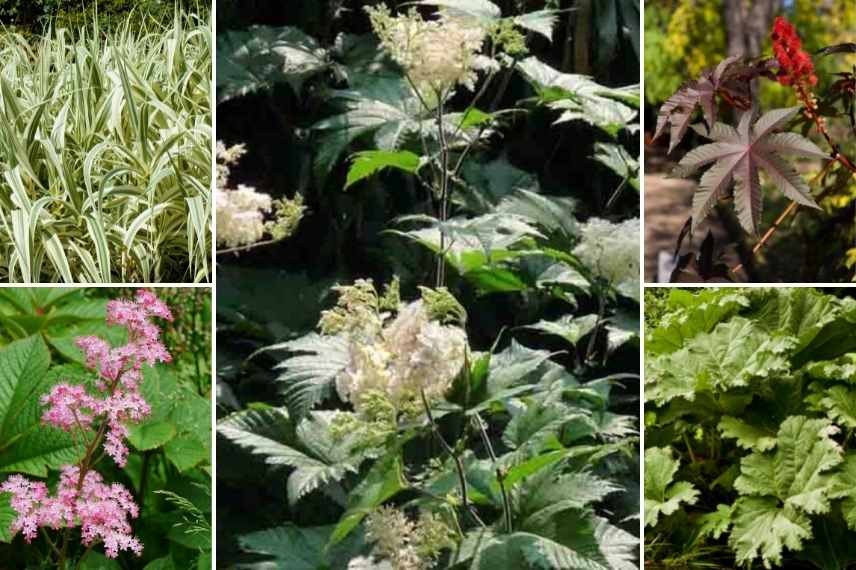
Filipendula camtschatica in the centre, surrounded by Arundo donax, Rodgersias, castor beans, and a Gunnera majestically
- Subscribe!
- Contents
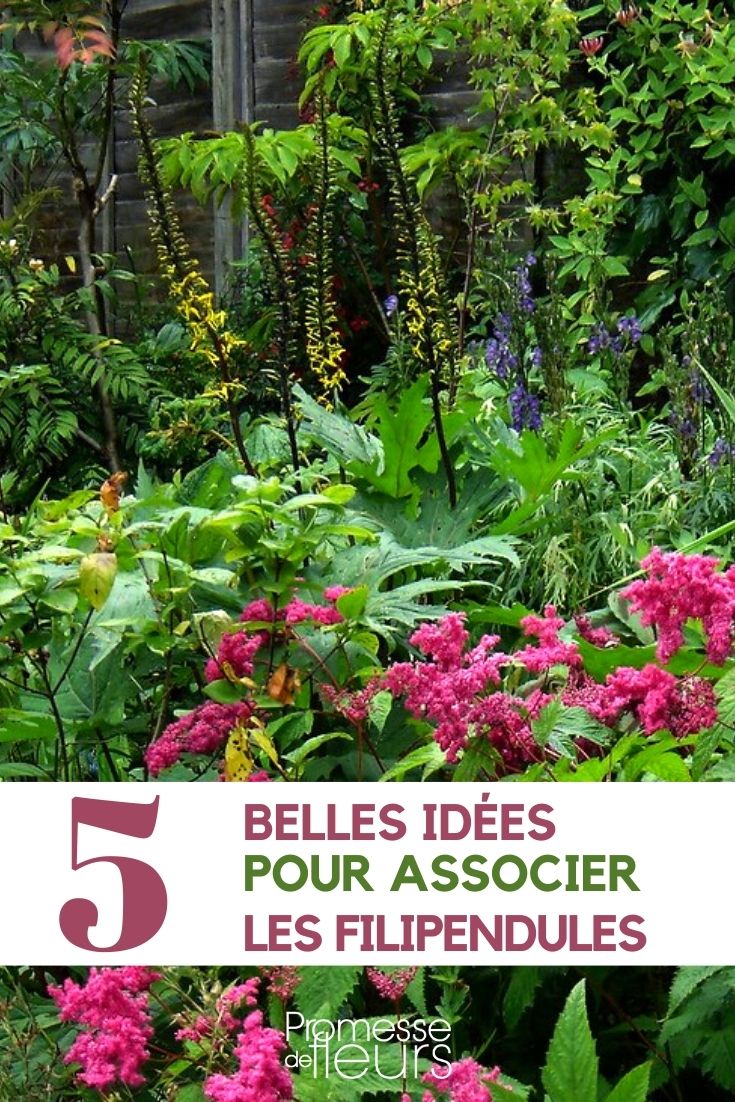































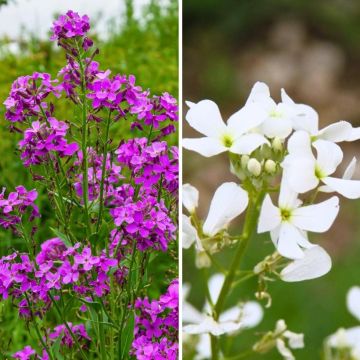
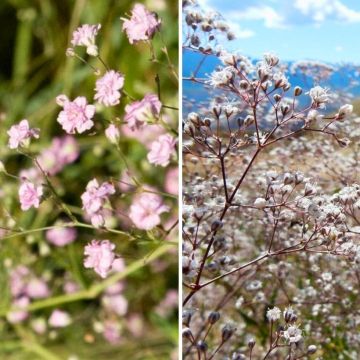
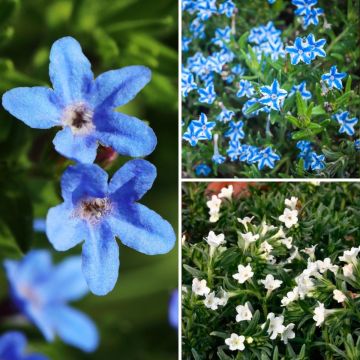
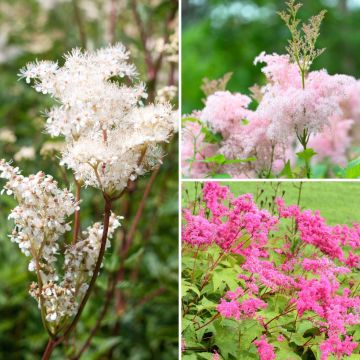
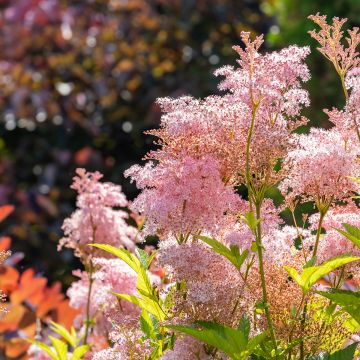
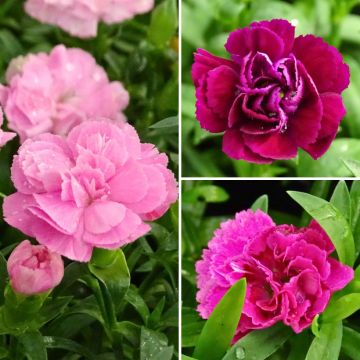
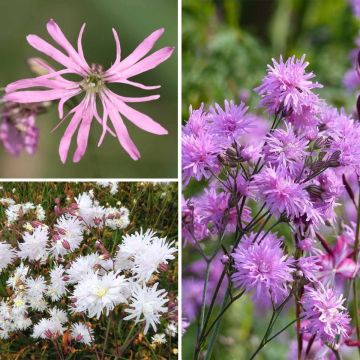
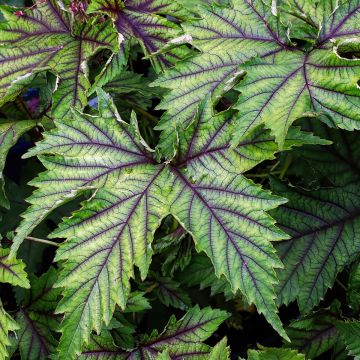
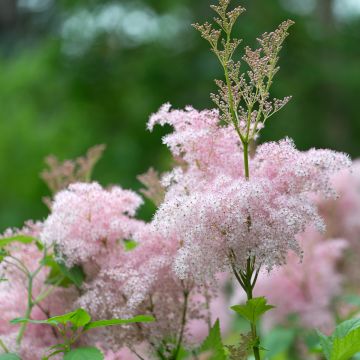
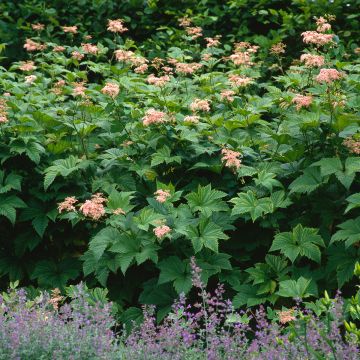
Comments